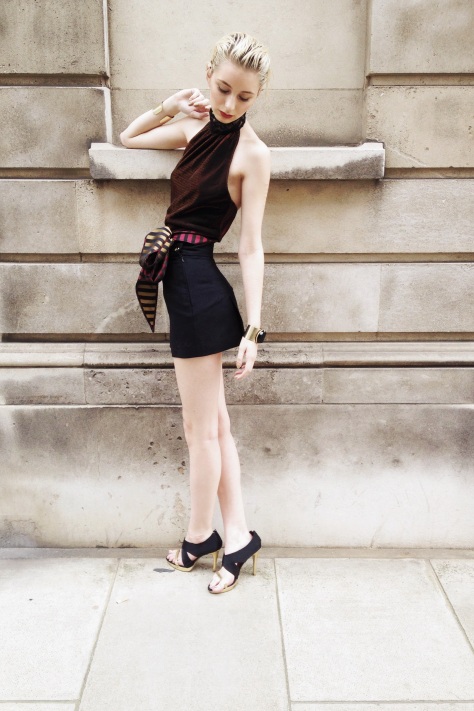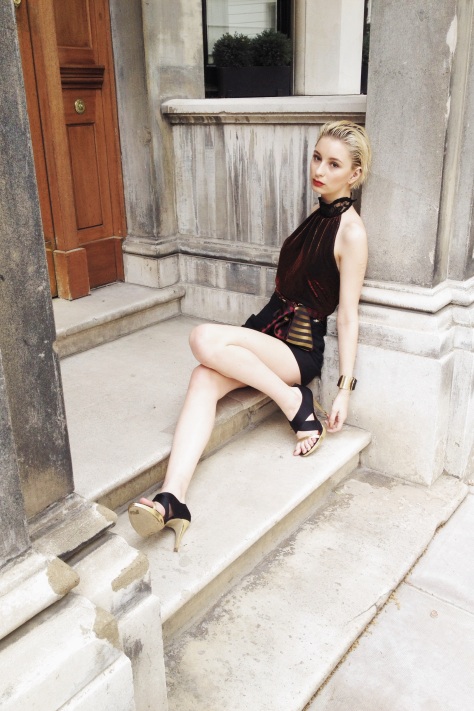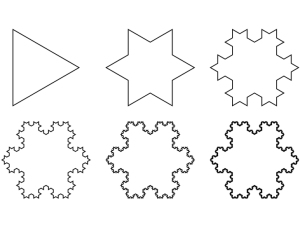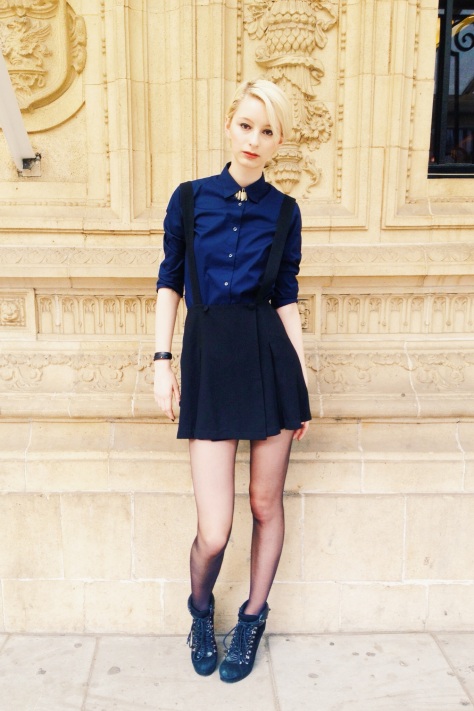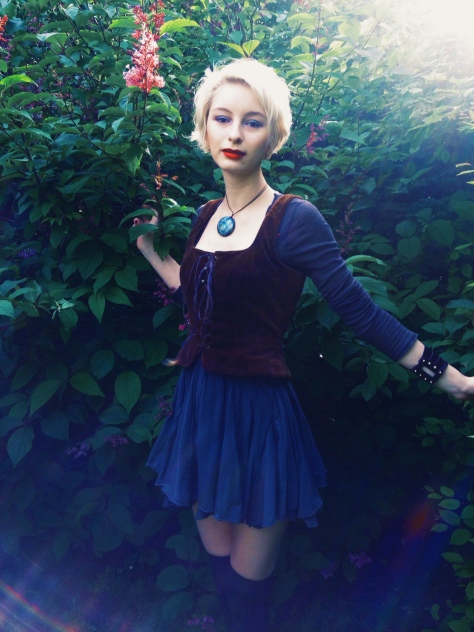
Imagine the scene. You’ve had a long day at work: maybe your boss was being especially cruel today, or your boyfriend broke up with you at lunch over the extra special anniversary picnic you had planned. Maybe you’ve been nominated to organise the surprise birthday party of that one person in your friend group who is just never satisfied. Whatever it is, now you’re home you just need to take a break from it all. You turn on your TV (A.I. controlled of course – everyone has one now darling), and the biosensor around your wrist bleeps once. Almost immediately, Mulan is playing on the screen in front of you, and before you know it your troubles begin to melt away as you join in singing ‘I’ll Make a Man Out of You’ (with choreographed dance and martial arts routines, of course).
It’s actually a scenario which isn’t that improbable; one where A.I.s can gauge your mood through biosensors and respond accordingly – in this case, choosing just the right film to allow you to let out the stress of a hectic day. Of course, we’re not quite there, but a performance at the V&A last Friday – ‘Conducting Shakespeare’ – went someway towards opening the door to let us have a peek at what it might be like.
The set-up at the V&A involved four volunteers all hooked into biosensors. There was a muscle tension gauge, a heart rate monitor, a brain wave monitor (which measures electrical signals from neural activity, giving a measure of ‘emotional arousal’), and a galvanic skin monitor (measures the conductivity of the skin, which increases when we sweat). All of this data was then combined together in a linear weighted sum and interpreted by our “A.I.” in this scenario to curate the arts that would be seen and performed. However, our A.I. here has a not-so-artificial intelligence, being Alexis Kirke from Plymouth University. He was to act as conductor, orchestrating and guiding the emotions of the performance. Performance of what, you ask (although you may have guessed, given the subtitle)? Well, performances that have captured the hearts and minds of audiences for centuries – the words of the bard!
This was no ordinary performance of Shakespeare – this was to be a Shakespeare remix, with successive scenes being chosen based on the emotion reaction of the audience (as measured by the biosensors hooked up to the volunteers), the whole thing being curated by Alexis the conductor, who could then direct the path of our emotions as he liked.
We started out with a bit of light comedy, with Benedict and Beatrice’s quick-witted sparring duologue from the opening scene of Much Ado about Nothing. Romance then began to spark in the air with Juliet’s ‘Gallop apace, you fiery-footed steeds’ monologue, before the tone begins to turn altogether more sombre with an appearance of Hamlet in his tortured ‘Frailty, thy name is woman!’ speech. Staying sad (although with a distinct change of tone) we move to Hermione’s ‘Tell me what blessings I have here alive that I should fear to die?’ monologue from A Winter’s Tale, before back to Hamlet, although this time he is chastising Ophelia and demanding she ‘get thee to a nunnery’, ramping up the anger and bitterness.
Finally we get a reprise from all the sorrow (although anyone with knowledge of the play will find it bittersweet), as Romeo and Juliet enter and talk of love – ‘how silver-sweet sound lovers’ tongues by night’ – before straight back to the sorrow with Queen Gertrude’s dead Ophelia monologue from Hamlet. Then we’re back to anger and annoyance with Richard II, and ‘no matter where, of comfort no man speaks’, before tricksy ambition enters the room as we see Lady Macbeth reading the letter describing Macbeth’s encounter with the three witches. Staying in the same play, the power begins to build as we see the Macbeths planning the murder of Duncan, with Lady Macbeth chastising Macbeth and telling him to ‘screw your courage to the sticking-place’, before we come full circle, and return to humour with Katharina and Petruchio duelling with words, a nice bit of comedy with allows us all to let off the tension that was building in the room – sexual innuendos will make anyone laugh, especially those of Shakespeare’s finesse – ‘my tongue in your tail’ indeed!
The performance was extremely effective – my heart was in my throat the whole time – and the eternal iambic pentameter of Shakespeare (and the brevity of the scenes) meant that even with the differing plotlines and characters, the whole thing flowed together smoothly. However, whilst the scenes were in part chosen from the data provided by the volunteers’ biosensors, a certain amount of human intuition was needed to make the whole thing run perfectly, as demonstrated by the final scene, an artistic decision on the part of the director that worked perfectly to let everyone let off some steam.
The need for this human component (instead of simply letting the conductor be an A.I.) comes down to many reasons – not least because this set-up had only been calibrated once before so the output data itself needed to be taken with a pinch of scientific salt. More so, however, the biosensors themselves can only detect the (fallible and fickle) physical symptoms of emotions, not the emotions themselves. In fact, with our limited biological understand of emotions, it’s hard to see how we could use biosensors to perfectly measure emotions (although some could argue this is the role of a combination of biosensors and fMRIs), and therefore whilst this problem still exists, the role of human understanding and intuition is crucial in this scenario.
Whilst perhaps we’re not quite at the stage to implement handy empathetic TVs, the use of measured emotional and physical responses to guide and curate performance (and other kinds of) art opens up some very interesting avenues, as demonstrated by ‘Conducting Shakespeare’ at the V&A. Imagine exhibitions where you wear headsets, and your emotional arousal if monitored as you wander through the gallery, and you get directly to things that you’d probably like based on it! The ability to empirically measure the body’s response to art is extremely interesting, and opens up the possibility of looking into things like how art affects your short-term and long-term mental health and emotional state. It’s an area that holds much potential and interest, both for the scientific and artistic communities, and as a personal interest for myself!
‘Conducting Shakespeare’ was part of a series of events held at the V&A to celebrate Shakespeare’s 450th birthday. It was produced by Alexis Kirke and Peter Hinds from Plymouth University in collaboration with the Guildhall School of Music and Drama, with actors Melanie Heslop and James Mack playing the female and male roles respectively.
And, well, there’s my first ever blog post done! The image used in the header is part of a tie-in little shoot I did inspired by Shakespeare (it kinda turned into a femme Puck look by the end) which will be published this Wednesday. I hope you enjoyed the piece, and please comment below (I’d really appreciate concrit and suggestions)!




